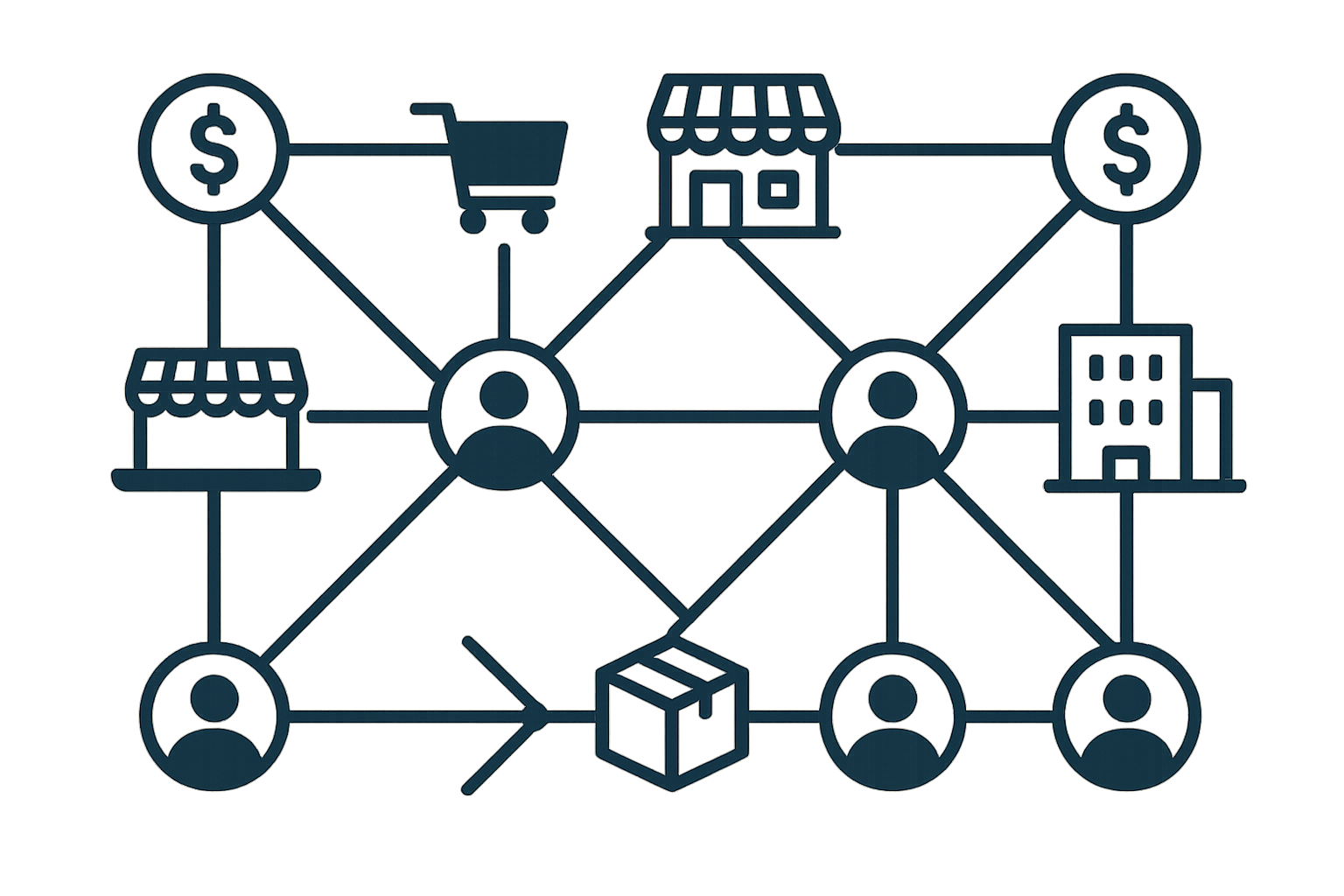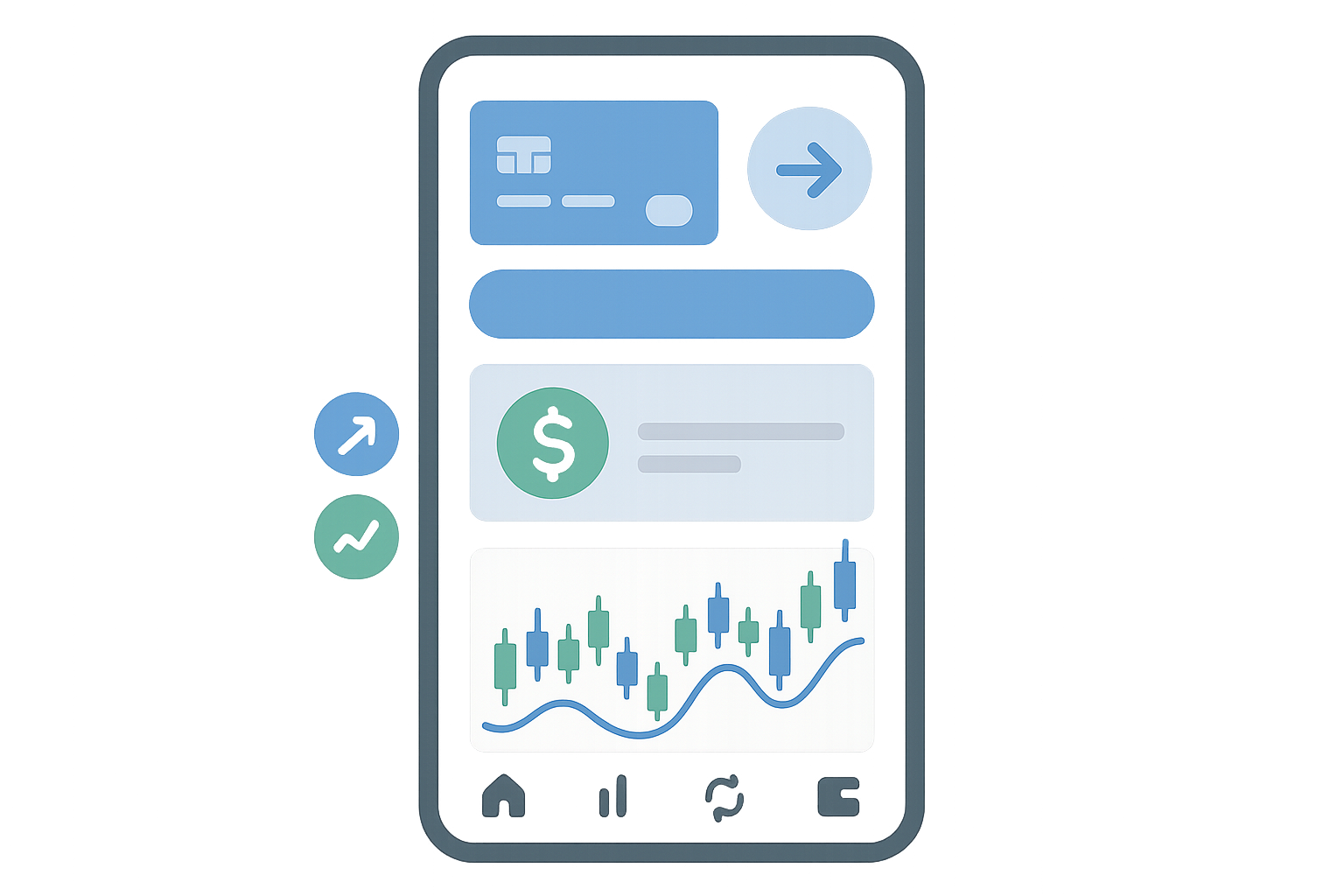Here’s a sobering stat that’ll make you pause: Harvard Business School found that out of the 30,000+ new products launched every year, 95% crash and burn (source). Ouch.
I remember launching my first product without a solid go-to-market strategy—it felt like throwing darts in the dark. The product was solid, but we had no clear path to reach our audience. That experience taught me the hard way that even the best products can fail without the right GTM approach.
With such a brutal failure rate, having a bulletproof go-to-market strategy isn’t just helpful—it’s your lifeline. The companies that break through the noise and achieve massive scale? They’ve all mastered one thing: bringing products to market strategically.
I dove deep into 25 companies that actually cracked the code across six major categories. These aren’t just feel-good success stories—they’re the real blueprints that separate the winners from the 95% that don’t make it.

Table of Contents
-
What Makes a Go-to-Market Case Study Worth Studying
-
B2B SaaS & Technology Solutions
-
Slack’s Freemium Viral Growth Model
-
Zoom’s Crisis-Driven Product-Led Growth
-
HubSpot’s Inbound Marketing Revolution
-
Canva’s Design Democratization Strategy
-
Notion’s Community-Powered Growth Engine
-
-
Consumer Products & Direct-to-Consumer Brands
-
Dollar Shave Club’s Disruptive Brand Revolution
-
Warby Parker’s Omnichannel Innovation
-
Casper’s Sleep Category Creation
-
Glossier’s Community-First Beauty Empire
-
Peloton’s Connected Fitness Ecosystem
-
-
Marketplace & Platform Business Models
-
Airbnb’s Two-Sided Marketplace Mastery
-
Uber’s Market Penetration Through Subsidization
-
Shopify’s E-commerce Democratization
-
DoorDash’s Local Market Domination
-
Etsy’s Niche Community Platform
-
-
Enterprise & B2B Services
-
Salesforce’s Cloud-First CRM Revolution
-
Stripe’s Developer-First Payment Processing
-
Monday.com’s Visual Project Management
-
Atlassian’s Product-Led Enterprise Growth
-
Twilio’s API-First Communication Platform
-
-
Fintech & Financial Services
-
Square’s Small Business Payment Ecosystem
-
Robinhood’s Commission-Free Trading Revolution
-
Coinbase’s Cryptocurrency Mainstream Adoption
-
-
Health & Wellness
-
Teladoc’s Telehealth Platform Scaling
-
Calm’s Meditation App Market Leadership
-
-
Strategic Patterns and Implementation Insights
-
How The Marketing Agency Applies These Learnings
TL;DR
After digging through all these success stories, here’s what actually moves the needle:
-
Product-led growth dominated 15 of 25 cases—turns out, amazing user experience beats fancy marketing every time
-
Community building created unstoppable growth for 12 companies (the kind that makes competitors cry)
-
Freemium models worked like magic in 10 cases, letting customers fall in love before opening their wallets
-
Platform strategies in 8 cases created those beautiful snowball effects where success breeds more success
-
Timing mattered more than anyone wants to admit—companies like Zoom and Teladoc got lucky with world events
-
Laser-focused targeting beat “spray and pray” marketing every single time
-
The winners were obsessed with capital efficiency while losers burned cash like it was going out of style
What Makes a Go-to-Market Case Study Worth Studying
Look, not every success story deserves your attention. I’ve seen too many founders try to copy strategies without understanding why they worked. The most valuable case studies share specific characteristics that make their strategies actually transferable.
Here’s what separates the real deal from the fluff.
Market Context & Timing is where most people get it wrong. You need to understand whether these companies entered established markets or created entirely new categories. The competitive landscape, economic conditions, and external factors all influence what strategies actually work versus what just got lucky. (And yeah, luck plays a bigger role than most CEOs want to admit.)
Target Audience Definition separates the pros from the amateurs. The best case studies show surgical precision in customer segmentation, solid validation research, and buyer personas so detailed you could pick them out of a crowd. Vague targeting? That’s usually a red flag for weak strategy.
Value Proposition Strength reveals whether success came from solving real problems or just clever marketing tricks. Look for clear problem-solution fit, genuine differentiation, and messaging that hits you right in the gut. If you have to think too hard about what they’re selling, they’re probably not solving a real problem.
When analyzing successful go-to-market strategies, understanding how to accurately size your market opportunity becomes crucial for setting realistic growth expectations and resource allocation requirements.
Channel Strategy Effectiveness shows how companies actually reached their audiences. Multi-channel integration, cost efficiency metrics, and customer acquisition costs across different channels—this is where the rubber meets the road. Pretty marketing campaigns don’t matter if they don’t drive results.
Resource Allocation & Budget gives you a reality check about what success actually costs. Investment levels, team structure requirements, and timeline execution help you figure out if these strategies fit your situation or if you’re just dreaming.
Measurable Outcomes separate the real winners from the vanity metric champions. ROI data, market penetration numbers, and scalability evidence show which strategies deliver sustainable growth versus short-term sugar highs.
|
Case Study Evaluation Criteria |
Key Questions to Ask |
Success Indicators |
|---|---|---|
|
Market Context & Timing |
Was the market ready? What external factors helped/hindered? |
Clear market gap identification, favorable timing evidence |
|
Target Audience Definition |
How precise was customer segmentation? |
Detailed buyer personas, validation research data |
|
Value Proposition Strength |
Does it solve real problems uniquely? |
Clear differentiation, immediate message resonance |
|
Channel Strategy Effectiveness |
Which channels drove actual growth? |
Multi-channel integration, efficient CAC metrics |
|
Resource Allocation |
What did success actually cost? |
Investment levels, team structure, timeline data |
|
Measurable Outcomes |
What concrete results were achieved? |
ROI metrics, market penetration, scalability proof |

B2B SaaS & Technology Solutions
The SaaS revolution didn’t happen by accident. These companies figured out something crucial: your product can be your best salesperson if you build it right. They cracked the code on product-led growth, turning their software into their primary sales and marketing engine while developing sophisticated go-to-market sales strategies that put user experience first.
Here’s how five companies turned great products into unstoppable growth machines.
1. Slack’s Freemium Viral Growth Model
The Strategy: Bottom-up adoption through a freemium model that spread through organizations like wildfire.
Slack walked into a crowded space dominated by email and clunky chat tools like HipChat. Instead of going head-to-head with the big players, they focused on making team communication actually enjoyable. (Revolutionary concept, right?)
Their freemium model was genius—10,000 messages felt generous enough to get real value, but eventually, you’d hit that limit right when you couldn’t imagine working without it. Built-in sharing mechanisms made growth automatic. When someone shared a Slack channel or mentioned a colleague, boom—organic expansion.
Picture this: A marketing team at some Fortune 500 company starts using Slack’s free tier for campaign coordination. Within weeks, they’re inviting the design team for asset collaboration, then the sales team for lead handoffs. Each new team member brings their own network, creating viral expansion within the organization. When they hit that 10,000 message limit during a product launch, upgrading becomes a no-brainer—they’re already hooked.
The word-of-mouth happened naturally through superior user experience, not forced referral programs. Strategic integrations with tools people already used (Google Drive, Trello, GitHub) made Slack the central hub teams actually wanted.
The Results: Zero to 500,000+ daily users in year one. $340M ARR by IPO. Sold to Salesforce for $27.7B. Not too shabby for a “simple” chat app.
2. Zoom’s Crisis-Driven Product-Led Growth
The Strategy: Built a product so reliable and simple that when the world needed it most, they were ready.
Here’s the thing about Zoom’s success—it wasn’t just about being in the right place at the right time. They’d spent years obsessing over reliability and ease of use while competitors loaded up on features nobody wanted.
Their free tier with the 40-minute limit was brilliant psychology—just enough time for meaningful meetings but short enough to create upgrade urgency. When COVID hit and everyone else’s platforms crashed under the load, Zoom scaled like it was nothing.
Educational content marketing positioned them as the remote work experts, while their dead-simple interface meant your grandmother could use it without calling tech support.
The Results: User base exploded from 10M to 300M+ daily participants in 2020. Revenue grew 326% year-over-year. Sometimes being prepared for the unexpected pays off big time.
3. HubSpot’s Inbound Marketing Revolution
The Strategy: Don’t just practice inbound marketing—invent it and teach it to the world.
HubSpot pulled off something incredible: they didn’t just use a marketing strategy, they created an entire methodology and became the go-to source for learning it. Their blog, free tools, and educational resources became the definitive marketing university.
Free tools like Website Grader provided instant value while capturing leads. Certification programs created a community of practitioners who became natural HubSpot evangelists. (Smart move—turn your customers into your sales force.)
Community building through events, user groups, and educational content created network effects that traditional advertising could never match.
The Results: Grew to $1.3B+ ARR with over 135,000 customers globally. Turns out, teaching your market can be way more effective than selling to it.
4. Canva’s Design Democratization Strategy
The Strategy: Make professional design accessible to people who can barely draw stick figures.
Canva spotted a massive gap: everyone needed visual content, but most people couldn’t design their way out of a paper bag. Professional design software was too complex, and hiring designers was too expensive.
Their freemium model with premium template upsells was perfect—create something impressive immediately, then when you want the fancy stuff, boom, upgrade time. The template marketplace created a beautiful flywheel: more users attracted more template creators, which attracted more users.
Social media integration made sharing effortless, turning every design into potential marketing for the platform. Educational content helped users level up their design skills while staying in the Canva ecosystem.
The Results: 100M+ monthly active users and a $40B valuation. They literally democratized design and made bank doing it.
5. Notion’s Community-Driven Product Development
The Strategy: Build a platform so flexible that users become your product development team.
Notion succeeded where tons of productivity tools failed by embracing flexibility over simplicity. Instead of telling people how to work, they created a platform that adapted to how people actually work.
Their user-generated template library became a discovery engine—users shared creative ways to use Notion, inspiring others to try similar approaches. Community-driven tutorials created a knowledge base that beat any traditional documentation.
Influencer partnerships with productivity enthusiasts and flexible positioning across multiple use cases (note-taking, project management, databases) expanded their market organically.
The Results: 30M+ users with a $10B valuation through mostly organic, community-driven growth. When your users become your biggest advocates, you’ve won.

Consumer Products & Direct-to-Consumer Brands
The DTC revolution proved something important: brands could skip the middleman and build direct relationships with customers. But here’s what most people missed—these companies didn’t just sell products, they created movements.
Let me show you how five brands turned direct-to-consumer into an art form.
6. Dollar Shave Club’s Disruptive Brand Revolution
The Strategy: Take on Gillette’s razor monopoly with humor, subscriptions, and a healthy dose of attitude.
Dollar Shave Club looked at the razor industry and said, “This is ridiculous.” Men were paying crazy prices for razors and dealing with complicated purchasing decisions. Their subscription model eliminated the friction of remembering to buy razors, while their humor-driven brand made shaving fun. (Who knew that was possible?)
That viral video (“Our Blades Are F***ing Great”) cost $4,500 to produce but generated millions of views and thousands of subscribers overnight. Sometimes the best marketing doesn’t look like marketing at all.
Their direct-to-consumer model bypassed traditional retail markups, enabling competitive pricing. The cost-focused value proposition (“Great razors for a few bucks a month”) hit price-conscious consumers right in the sweet spot.
The Results: Unilever bought them for $1B after just 5 years, forcing the entire personal care industry to rethink everything. Not bad for a company that started with a funny video.
7. Warby Parker’s Omnichannel Retail Innovation
The Strategy: Fix expensive eyewear by eliminating middlemen and making online shopping actually work for glasses.
Warby Parker figured out that expensive eyewear was mostly a distribution problem—traditional optical shops had crazy overhead and limited selection. Their direct-to-consumer model cut out the middleman while maintaining quality.
The home try-on program was genius—it solved the biggest friction point in online eyewear shopping. Pick five frames, try them at home for five days, then buy your favorites. Showroom locations provided tactile experiences without traditional retail overhead.
Social impact messaging (buy one, give one) created emotional connection beyond product features. Vertical integration let them control the entire customer experience while maintaining healthy margins.
The Results: $540M revenue and successful IPO in 2021. They proved that omnichannel strategies could disrupt even the most traditional retail categories.
8. Casper’s Sleep Category Creation
The Strategy: Turn mattress shopping from a nightmare into a wellness experience.
Casper transformed one of the most dreaded shopping experiences into something actually engaging. Instead of competing on features, they positioned sleep as a wellness category deserving attention and investment.
Their direct-to-consumer model bypassed traditional mattress retail (known for pushy sales tactics and confusing options) with simplified product lines and transparent pricing. The 100-night sleep trial removed all purchase risk.
Here’s where it gets interesting: Casper launched sleep podcasts and blog content about sleep hygiene. They weren’t just selling mattresses—they were educating people about sleep importance. A customer might discover Casper through an article about “Why You Wake Up Tired,” gradually learn about sleep environment factors, and eventually realize their old mattress was the problem. By purchase time, Casper had already established themselves as the sleep expert, not just another mattress company.
Content marketing around sleep health educated consumers while positioning Casper as the expert solution. Subway advertising and experiential marketing created brand awareness in unexpected places.
The Results: $400M+ revenue before IPO and sparked the entire bed-in-a-box industry. They proved that category creation could be more valuable than category competition.
9. Glossier’s Community-First Beauty Empire
The Strategy: Flip beauty marketing on its head by celebrating real customers instead of perfect models.
Glossier completely rewrote the beauty playbook. Instead of aspirational imagery with professional models, they celebrated real customers and authentic beauty moments. Revolutionary? Absolutely.
Instagram-first marketing treated social media as their primary channel, not an afterthought. User-generated content campaigns encouraged customers to share their Glossier experiences, creating authentic social proof that traditional advertising couldn’t buy.
Minimalist product design and packaging photographed beautifully for social sharing, turning every purchase into potential marketing content. Pop-up retail experiences created exclusive, shareable moments that strengthened community bonds.
The Results: $1.2B valuation with cult-like brand following. They demonstrated that community building could create more valuable brands than traditional advertising ever could.
10. Peloton’s Connected Fitness Ecosystem
The Strategy: Don’t just sell exercise bikes—create a complete fitness universe.
Peloton didn’t just sell hardware; they created a comprehensive fitness ecosystem combining premium equipment with engaging content and social features.
Their premium hardware with subscription content model created recurring revenue while building customer loyalty. Celebrity instructor personalities (like Robin Arzon and Cody Rigsby) developed devoted followings that went way beyond typical trainer relationships.
Gamification through leaderboards, achievement badges, and social features made home workouts competitive and engaging. Community building created connections between users who might never meet but shared fitness journeys.
The Results: $4B revenue at peak with 2.3M+ subscribers. They proved that connected experiences could command premium pricing in traditionally commoditized categories.

Marketplace & Platform Business Models
Building successful marketplaces is like solving a chicken-and-egg problem while blindfolded. You need supply to attract demand, but you need demand to attract supply. These companies cracked that code, and honestly, some of their solutions were pretty wild.
11. Airbnb’s Two-Sided Marketplace Mastery
The Strategy: Focus on supply-side growth in key markets first, then let demand follow.
The success of Airbnb’s marketplace strategy offers valuable insights that complement our detailed Airbnb case study analysis of their complete growth methodology.
Airbnb walked into the established hospitality industry and said, “What if travel could be authentic and affordable?” Their challenge was building both hosts and guests simultaneously without going broke.
The photographer program was brilliant—professional photos increased booking rates by 40%, making hosting more attractive and profitable. Craigslist integration automated posting to reach existing audiences already looking for accommodations.
Geographic market-by-market expansion let them build critical mass in individual cities before going global. This concentrated approach created network effects within markets before attempting broader growth.
The Results: $6B+ revenue with presence in 220+ countries. They fundamentally changed how people think about travel accommodations.
12. Uber’s Market Penetration Through Subsidization
The Strategy: Use massive investor capital to subsidize both sides until network effects kick in.
Uber’s strategy was controversial but effective—burn through enormous amounts of investor money to subsidize both riders and drivers until the marketplace became self-sustaining.
Aggressive pricing below taxi costs attracted riders quickly, while driver incentives and bonuses built supply rapidly. City-by-city launch strategy let them dominate individual markets before expanding.
Referral programs for both riders and drivers created organic growth loops that reduced customer acquisition costs over time. The strategy required enormous capital but created winner-take-all market positions.
The Results: Global presence in 900+ cities with $31B+ revenue. Though honestly, it took years to achieve profitability because of the subsidization strategy.
13. Shopify’s E-commerce Democratization
The Strategy: Make professional e-commerce accessible to anyone with a business idea.
Shopify spotted that e-commerce was way too complex and expensive for most small businesses. Their platform made professional online stores accessible to entrepreneurs without technical expertise or huge budgets.
Their freemium pricing model with transaction fees was genius—Shopify only made money when merchants made sales. The app ecosystem encouraged third-party integrations, creating a marketplace of solutions that enhanced platform value.
Educational content for entrepreneurs positioned Shopify as more than a platform—they became a partner in business success. Payment processing integration simplified the most complex part of e-commerce setup.
The Results: Powers over 1.7M businesses globally with $5.6B+ revenue. They proved that democratizing complex technology could create massive markets.
14. DoorDash’s Local Market Domination
The Strategy: While competitors fought over big cities, dominate the suburbs nobody else wanted.
While competitors battled over major metropolitan areas, DoorDash identified underserved suburban and smaller markets with less competition and lower customer acquisition costs. Smart move.
Geographic focus on these markets let them build density and operational efficiency before expanding to competitive urban areas. Restaurant partnership development emphasized local favorites rather than just national chains.
Driver fleet optimization and logistics improvements created better unit economics in less dense markets. Customer retention through DashPass subscription created predictable revenue streams.
The Results: Became largest food delivery platform in US with 67% market share by avoiding head-to-head competition initially.
15. Etsy’s Niche Community Platform
The Strategy: Build a marketplace specifically for handmade and vintage items with a strong seller community.
Etsy succeeded by serving a specific niche that Amazon and eBay largely ignored—handmade, vintage, and craft supplies. Their community-focused approach created emotional connections that went way beyond typical marketplace relationships.
Seller education and support programs helped artisans build successful businesses, creating loyalty and advocacy. SEO-optimized product listings helped small sellers compete with larger retailers in search results.
Social proof through reviews, favorites, and seller stories created trust in a marketplace where buyers couldn’t physically examine products. Mobile-first shopping experience adapted to changing consumer behavior.
The Results: 96M+ active buyers with $2.7B+ gross merchandise sales. They proved that niche focus could create sustainable competitive advantages.
|
Marketplace Strategy |
Chicken-and-Egg Solution |
Key Success Factor |
Example Companies |
|---|---|---|---|
|
Supply-Side First |
Build inventory before demand |
Quality control, professional support |
Airbnb, Etsy |
|
Geographic Concentration |
Dominate single markets |
Local density, operational efficiency |
DoorDash, Uber |
|
Subsidization Model |
Fund both sides until sustainable |
Massive capital, network effects |
Uber, DoorDash |
|
Platform Ecosystem |
Create third-party value |
Developer tools, revenue sharing |
Shopify, Etsy |

Enterprise & B2B Services
Enterprise software got a major upgrade when these companies decided to prioritize user experience over traditional enterprise sales complexity. Turns out, even B2B buyers appreciate products that don’t suck.
16. Salesforce’s Cloud-First CRM Revolution
The Strategy: Pioneer the “no software” revolution and make enterprise CRM actually usable.
Understanding Salesforce’s revolutionary approach provides context for our comprehensive Salesforce case study that examines their complete transformation of enterprise software delivery.
Salesforce looked at traditional enterprise software—expensive licenses, complex installations, IT nightmares—and said, “There’s got to be a better way.” Their cloud-first approach eliminated all that headache while providing superior functionality.
Subscription-based pricing made enterprise software accessible to smaller businesses while providing predictable revenue. Extensive customization capabilities satisfied enterprise requirements without custom development nightmares.
The AppExchange ecosystem created a marketplace of third-party solutions, making Salesforce a platform rather than just software. Thought leadership through events like Dreamforce established them as industry visionaries.
The Results: $26B+ revenue and became the largest CRM provider globally. They proved that cloud-first could dominate enterprise markets.
17. Stripe’s Developer-First Payment Processing
The Strategy: Make developers fall in love with your API, and they’ll convince their bosses to use you.
Stripe identified that payment processing was unnecessarily complex for developers. While competitors focused on business decision-makers, Stripe made developers their primary customer. Brilliant.
Superior developer documentation and tools made integration straightforward—their famous “seven-line code integration” became a competitive advantage. Transparent pricing eliminated hidden fees that frustrated developers.
Global expansion with local payment methods made Stripe valuable for international businesses. Developer advocacy and community building created organic growth through word-of-mouth recommendations.
The Results: Valued at $95B and processes hundreds of billions in payments annually by making developers their champions.
18. Monday.com’s Visual Project Management
The Strategy: Make project management visually intuitive instead of feature-heavy and confusing.
Monday.com walked into a crowded project management space dominated by complex, feature-heavy solutions. Their visual approach made project management accessible to non-technical team members.
Freemium model with team collaboration focus allowed organic adoption within organizations. Visual workflow design used colors, progress bars, and intuitive layouts that required minimal training.
Template marketplace for different industries provided starting points for various use cases. Integration ecosystem connected with popular business tools without requiring technical setup.
The Results: $900M+ valuation and successful IPO by making project management visually intuitive.
19. Atlassian’s Product-Led Enterprise Growth
The Strategy: Prove that enterprise software could grow through product experience rather than traditional sales.
Atlassian proved something revolutionary—enterprise software could grow through product experience rather than lengthy sales processes. Their self-service approach eliminated those painful sales cycles.
Product integration ecosystem (Jira, Confluence, Bitbucket) created switching costs and increased customer lifetime value. Community-driven support and education reduced customer service costs while building user expertise.
Transparent pricing and online purchase made buying decisions straightforward. Developer-focused tools created bottom-up adoption within enterprise organizations.
The Results: Over 250,000 customers with $3B+ annual revenue. They demonstrated that product-led growth could work in enterprise markets.
20. Twilio’s API-First Communication Platform
The Strategy: Make complex telecommunications infrastructure accessible through simple APIs.
Twilio democratized communication technology by making complex telecom infrastructure accessible through simple APIs. Developers could add SMS, voice, and video capabilities without building infrastructure from scratch.
Here’s a real example: When a startup needed SMS notifications, traditional telecom solutions required months of negotiations, complex integrations, and minimum volume commitments. With Twilio, the same developer could integrate SMS functionality in an afternoon using their REST API, pay only for messages sent, and scale from 100 to 100,000 messages seamlessly. This developer experience created organic advocacy—satisfied developers recommended Twilio to other developers, creating viral growth within the technical community.
Pay-as-you-go pricing aligned costs with usage, making it accessible for startups and scalable for enterprises. Comprehensive developer resources and documentation made integration straightforward.
Multi-channel communication APIs (SMS, voice, email, chat) provided comprehensive solutions through a single platform. Customer success and support focus ensured developer satisfaction and retention.
The Results: Powers communication for millions of applications with $3.8B+ revenue by making complex technology simple.

Fintech & Financial Services
Financial services got disrupted by companies that decided user experience mattered more than traditional banking complexity. Turns out, people actually appreciate financial products that don’t make them want to pull their hair out.
21. Square’s Small Business Payment Ecosystem
The Strategy: Simplify payment processing for small businesses with transparent pricing and simple hardware.
Square looked at small business payment processing—complex set
Square looked at small business payment processing—complex setups, long-term contracts, confusing fees—and thought, “This is insane.” They identified that small businesses were massively underserved by traditional processors.
Simple card reader hardware made accepting payments accessible to any business with a smartphone or tablet. Transparent, flat-rate pricing (2.75% per swipe) eliminated hidden fees and complex rate structures that nobody understood.
Integrated POS and business management tools created a complete ecosystem for small business operations. Small business-focused marketing emphasized simplicity and accessibility over enterprise features.
The Results: Processes over $200B in payments annually with $136B market cap. They proved that simplicity could win in complex industries.
22. Robinhood’s Commission-Free Trading Revolution
The Strategy: Democratize stock trading by eliminating commissions and creating a mobile-first experience.
Robinhood challenged the traditional brokerage model by eliminating trading commissions and creating an intuitive mobile experience that made investing accessible to younger demographics who’d been priced out.
Zero-commission trading removed the biggest barrier to frequent trading for small investors. Gamified mobile app interface made investing engaging rather than intimidating.
Social features and community elements created engagement beyond just trading. Cryptocurrency integration attracted tech-savvy users interested in digital assets.
The Results: 22M+ funded accounts and forced industry-wide commission elimination. They fundamentally changed how brokerages operate.
23. Coinbase’s Cryptocurrency Mainstream Adoption
The Strategy: Make cryptocurrency investing as simple as traditional stock trading.
Coinbase succeeded by making crypto investing as simple as buying stocks. Their focus on regulatory compliance and user education built trust in a market full of skeptics.
Educational content about cryptocurrency helped demystify digital assets for mainstream consumers. Regulatory compliance focus differentiated them from shadier competitors.
Simple buy/sell interface eliminated technical complexity that intimidated non-technical users. Institutional services expansion created revenue diversification beyond retail trading.
The Results: 108M+ verified users and successful public listing. They proved that user-friendly interfaces could drive mainstream adoption of complex technologies.

Health & Wellness
Healthcare and wellness got transformed by companies that leveraged technology and changing consumer behaviors to create new categories and delivery methods. Sometimes the best disruption comes from making things more accessible.
24. Teladoc’s Telehealth Platform Scaling
The Strategy: Build a comprehensive telehealth platform that makes healthcare more accessible and convenient.
Teladoc identified that healthcare access was limited by geography, time constraints, and cost barriers. Their platform made healthcare more accessible and convenient for routine medical needs.
Insurance partnership integration made telehealth affordable and accessible through existing healthcare benefits. 24/7 availability addressed urgent care needs outside traditional office hours.
Specialized care offerings expanded beyond general consultations to include mental health, dermatology, and chronic condition management. Corporate wellness programs created B2B revenue streams while improving employee health outcomes.
The Results: 54M+ members globally with accelerated growth during the pandemic. They proved that digital healthcare delivery could scale effectively.
25. Calm’s Meditation App Market Leadership
The Strategy: Position meditation and sleep content as essential wellness tools through premium content.
Calm entered the meditation app market by focusing on content quality and celebrity partnerships rather than just meditation instruction. Their approach made mindfulness accessible to mainstream audiences who might have been intimidated by traditional meditation.
Celebrity narrator partnerships (Matthew McConaughey, LeBron James) created mainstream appeal and media attention. Sleep stories and relaxation content expanded beyond traditional meditation to address broader wellness needs.
Subscription-based premium model provided sustainable revenue while offering substantial free content. Corporate wellness partnerships created B2B revenue streams while promoting employee mental health.
The Results: 100M+ downloads with $2B+ valuation. They demonstrated that premium content could drive subscription growth in wellness categories.

Strategic Patterns and Implementation Insights
After digging through all these success stories, four patterns kept popping up everywhere. And I mean everywhere.
Product-Led Growth Dominance showed up in 15 of 25 case studies. Companies like Slack, Zoom, and Notion proved that exceptional user experience could drive adoption way more effectively than traditional sales and marketing approaches. When your product becomes your primary growth engine, customer acquisition costs plummet while satisfaction skyrockets.
Community & Network Effects powered 12 case studies. Airbnb’s host community, Glossier’s beauty enthusiasts, and Notion’s productivity advocates created organic growth loops that traditional advertising couldn’t touch. These communities became sustainable competitive advantages that competitors couldn’t easily replicate.
Freemium Conversion worked like magic for 10 companies across different industries. The strategy lets customers experience real value before making purchase decisions, reducing sales friction while demonstrating product capabilities. But here’s the catch—the free tier must provide genuine value without cannibalizing paid features.
Platform/Ecosystem Strategy created exponential growth for 8 companies. Shopify’s app marketplace, Salesforce’s AppExchange, and Stripe’s integration ecosystem transformed single products into comprehensive platforms. Third-party developers and partners became force multipliers for growth.
|
Success Pattern |
Companies Using This Strategy |
Key Implementation Factor |
Primary Benefit |
|---|---|---|---|
|
Product-Led Growth |
Slack, Zoom, Notion, Canva, Monday.com |
Exceptional user experience |
Lower CAC, higher retention |
|
Community & Network Effects |
Airbnb, Glossier, Etsy, HubSpot |
User engagement and advocacy |
Organic growth loops |
|
Freemium Conversion |
Slack, Canva, Zoom, Spotify, Dropbox |
Value demonstration |
Reduced sales friction |
|
Platform/Ecosystem |
Shopify, Salesforce, Stripe, Twilio |
Third-party integrations |
Exponential scaling |
Common Failure Points to Avoid
Let’s be real about what kills promising companies.
Premature Scaling destroyed companies that expanded too quickly before achieving product-market fit. Geographic expansion, team growth, and feature development must align with validated customer demand. I’ve seen too many startups burn through cash faster than a teenager with a credit card because they thought early traction meant it was time to go big.
Channel Conflict killed brands that couldn’t balance direct-to-consumer strategies with retail partnerships. Clear channel strategies prevent internal competition and partner conflicts that can destroy relationships and confuse customers.
Regulatory Blindness particularly hurt fintech and marketplace companies that ignored compliance requirements. Regulatory strategy must be integrated into go-to-market planning from day one, not treated as an afterthought.
Community Neglect turned valuable user communities into abandoned assets. Platforms that succeeded long-term invested continuously in community development and engagement. Building a community is hard; maintaining one is harder.

How The Marketing Agency Applies These Learnings
Our approach to calculating marketing ROI ensures that every strategy we implement delivers measurable results, just like the successful companies in these case studies.
The scientific approach we use at The Marketing Agency directly tackles the critical success factors I found across these 25 breakthrough case studies.
Our “highly tuned scientific approach to market analysis allows us to see the gaps that most agencies miss”—this mirrors exactly how successful companies like Slack identified communication gaps, Warby Parker spotted price/experience gaps, and DoorDash recognized underserved suburban markets.
Gap Identification & Market Analysis forms the foundation of our methodology. We don’t guess at market opportunities—we use data to identify where competitors are screwing up and where customer needs aren’t being met. This systematic approach helped companies like HubSpot create their inbound methodology and Stripe focus on developer experience.
Understanding how to develop high-impact blog topics becomes crucial for companies looking to replicate HubSpot’s content-driven growth strategy.
Performance-Focused Strategy Development emphasizes “strategies rooted in data and science” rather than throwing money at marketing and hoping something sticks. This aligns with the methodical approaches used by successful companies that prioritized measurable outcomes over creative campaigns that looked pretty but didn’t drive results.
ROI-Driven Channel Selection focuses on performance and measurable results. Our service offerings directly support the most successful go-to-market strategies:
-
PPC Management ($750-$5,000/month): Perfect for rapid customer acquisition strategies used by companies like Casper and Dollar Shave Club
-
Email Marketing ($1,200-$10,000/month): Essential for nurturing strategies proven by SaaS companies like Notion and Monday.com
-
Inbound Marketing ($500-$3,000/month): Cost-effective approach that powered HubSpot and Slack’s content strategies
Our comprehensive marketing case study methodology helps businesses understand which strategies will work best for their specific market conditions and business model.
|
Go-to-Market Strategy |
Marketing Agency Service |
Monthly Investment Range |
Best For |
|---|---|---|---|
|
Rapid Customer Acquisition |
PPC Management |
$750-$5,000 |
DTC brands, SaaS trials |
|
Community Building & Nurturing |
Email Marketing |
$1,200-$10,000 |
B2B SaaS, subscription models |
|
Educational Content & SEO |
Inbound Marketing |
$500-$3,000 |
Enterprise software, fintech |
|
Integrated Multi-Channel |
Combined Services |
$2,500-$15,000+ |
Marketplace, platform businesses |
Our scientific approach helps businesses avoid the “gambling on marketing” that led to failures across multiple categories—premature scaling without data validation, channel conflicts from poor strategic planning, and resource misallocation without performance tracking.
For businesses looking to replicate these successful go-to-market strategies, our combination of strategic analysis, performance measurement, and hands-on execution support provides the infrastructure needed to avoid common pitfalls while maximizing the probability of achieving breakthrough results.

Final Thoughts
These 25 go-to-market case studies prove something important: breakthrough success follows identifiable patterns, not random luck. Product-led growth, community building, freemium conversion, and platform strategies created sustainable competitive advantages across completely different industries and business models.
The companies that achieved massive scale didn’t just have great products—they had systematic approaches to bringing those products to market. They understood their customers deeply, chose channels strategically, and executed with precision while staying flexible enough to adapt when market conditions changed.
Most importantly, they avoided the common pitfalls that destroy promising companies: premature scaling, channel conflicts, regulatory blindness, and community neglect. Success required both strategic thinking and flawless execution, supported by data-driven decision making throughout the process.
Here’s the bottom line: The 95% failure rate for new products isn’t inevitable—it’s the result of poor go-to-market strategy and execution. These case studies provide the blueprints for joining the 5% that actually succeed.
The strategies are out there. The patterns are clear. The question is: which one will you adapt for your launch?



